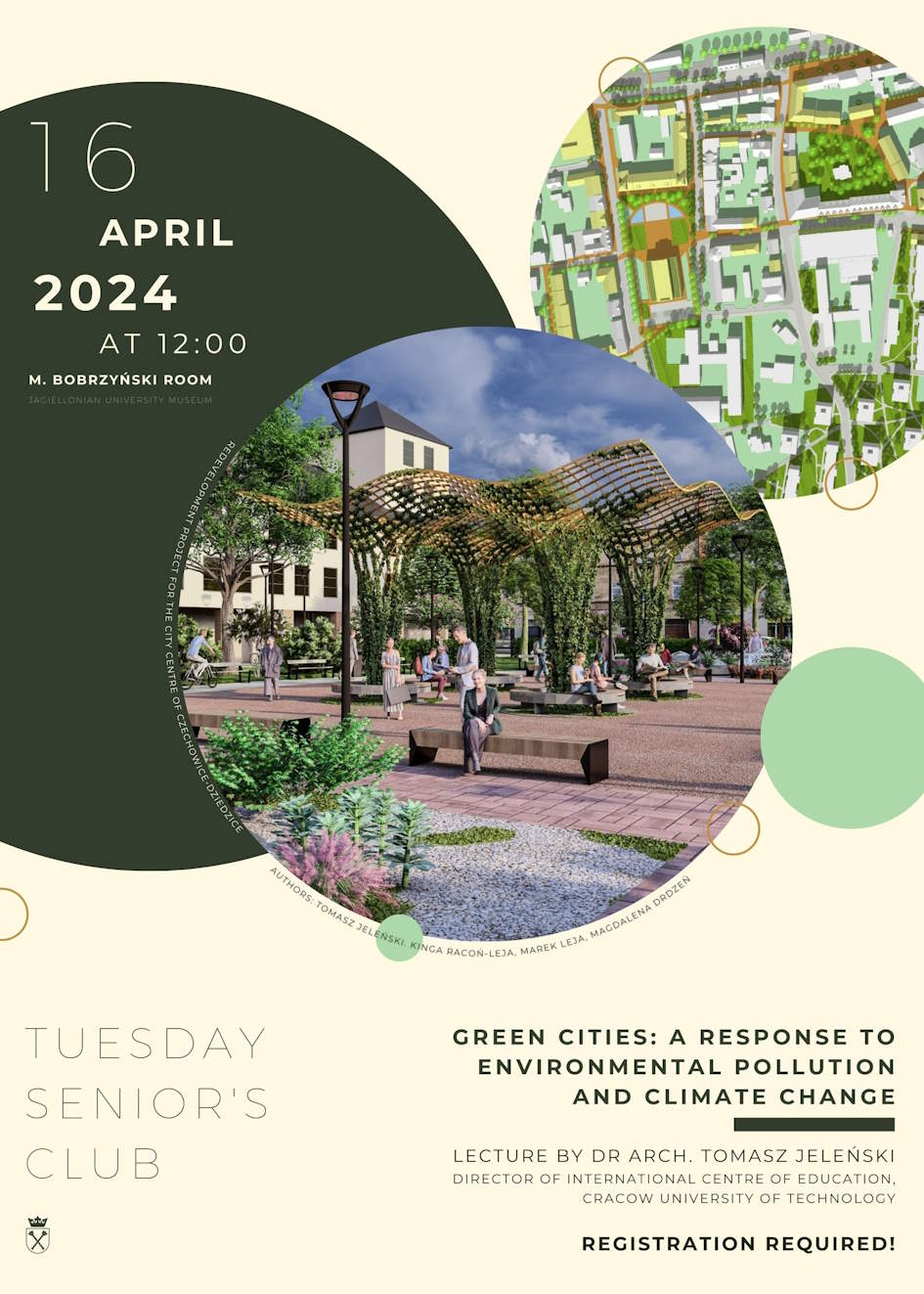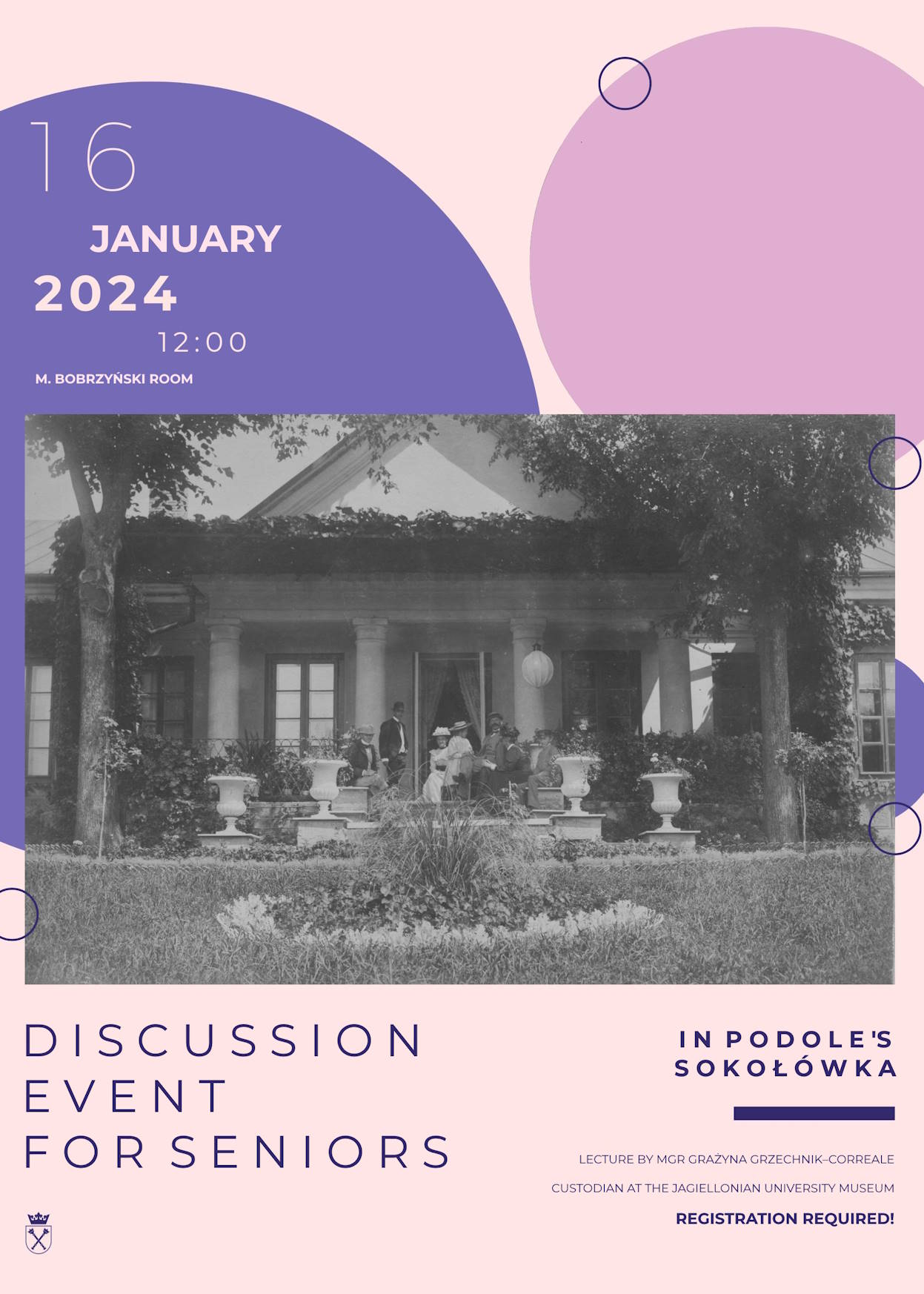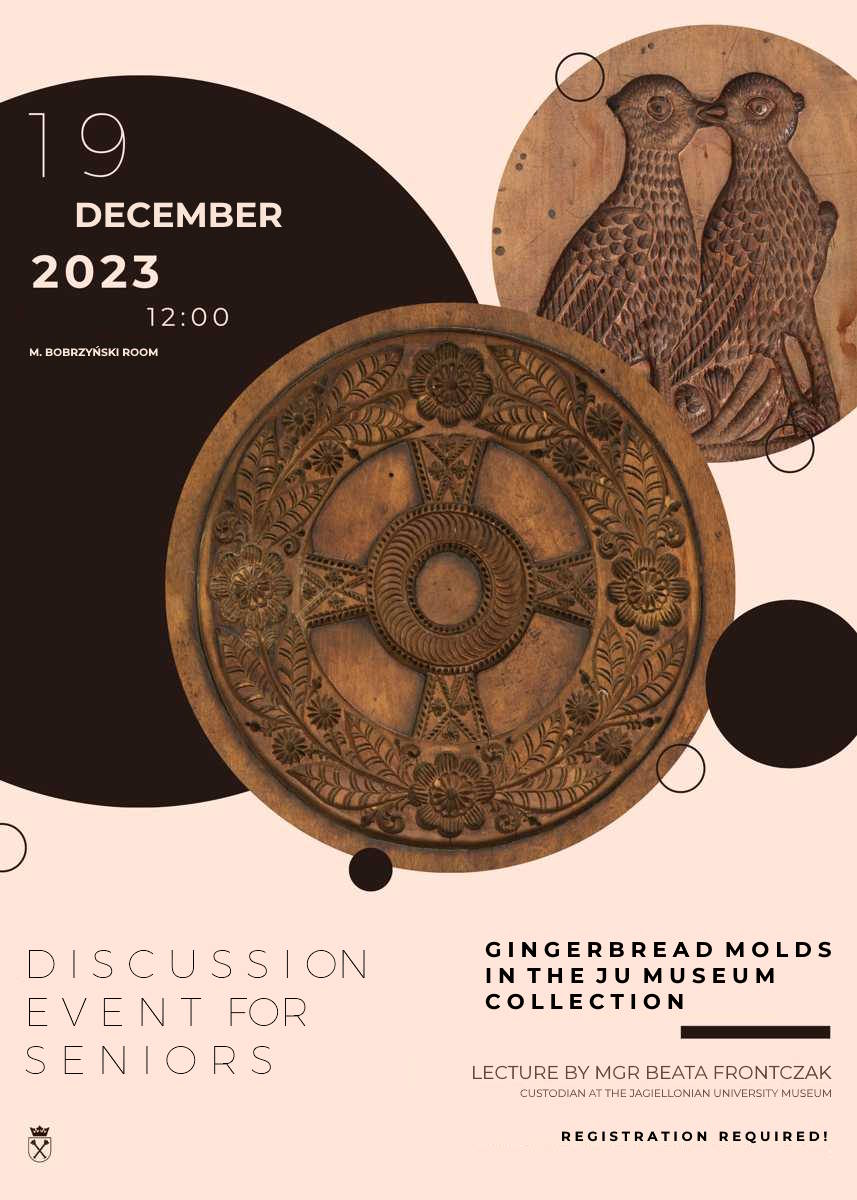As usual, we invite everyone to join a discussion event taking place exactly at twelve o'clock as a part of the Tuesday Senior's Club. The event takes place once a month, on Tuesday at 12:00 in the Bobrzyński Room located inside the Collegium Maius Jagiellonian University Museum. The entry fee of 8 Złoty is to be paid in the museum's ticket office. Due to event organisation it is required to make a reservation by sending an e-mail message to the following address: malgorzata.taborska[at]uj.edu.pl. Future events are scheduled for 16 April, 21 May, and 18 June.
16 April: Green cities — an answer to environmental pollution and climate change
The concept of green cities has a strong foundation in the theory of architecute, but only rarely finds its realisation. The city is an arena of economic competition which marginalises all investitions not aimed at providing quick income. This applies, among others to park designs, urban gardens, garden squares, and tree planting. Their creation and maintenance are costly and, even though their positive influence on health and wellness of people is commonly known, it is uncommon to see them implemented in the practical urban management.
A positive change can be made through the development of knowledge about the value of urban ecosystems. This can validate the sustainability of green investitions and efficiency of nature-based solutions for such problems as minimalisation of flood hazards, noise pollution, reducing the effects of summer heat, as well as purification and detoxification of air and water. The use of urban ecosystems becomes a rational option, and even a necessity, especially in face of the energetic and climatic crises when the green potential for phytoremediation, adaptation and mitigation cannot be replaces by technical solutions. Therefore, the so-called blue-green infrastructure (BGI) is winning at importance as it improves the ecological conditions and resilience of cities against climatic threats, reinforcing or replacing technical solution. The BGI includes large-scale projects involving water retention, renaturalisation of rivers, and creation of park complexes, but also minor investitions such as planting of trees and bushes, creation of flower meadows, construction of green roofs and walls, rain gardens, and pervious surfaces. The discussion will present the theoretical fundamentals and examples of such realisations done in Polish cities.
Dr Tomasz Jeleński – nauczyciel akademicki, urbanista, dyrektor Międzynarodowego Centrum Kształcenia Politechniki Krakowskiej, członek Rady Fundacji Sendzimira, Kolegium Recenzentów Europejskiej Fundacji Nauki, Komisji Ekspertów Rzecznika Praw Obywatelskich „Klimat i Przestrzeń” oraz Rady Akredytacyjnej Republiki Albanii; przewodniczący INTBAU Polska, członek zarządu INTBAU UK i przewodniczący INTBAU College of Chapters; autor ponad 90 naukowych publikacji na temat zrównoważonej urbanistyki i architektury, odporności miast i budynków oraz adaptacji do zmian klimatu.





